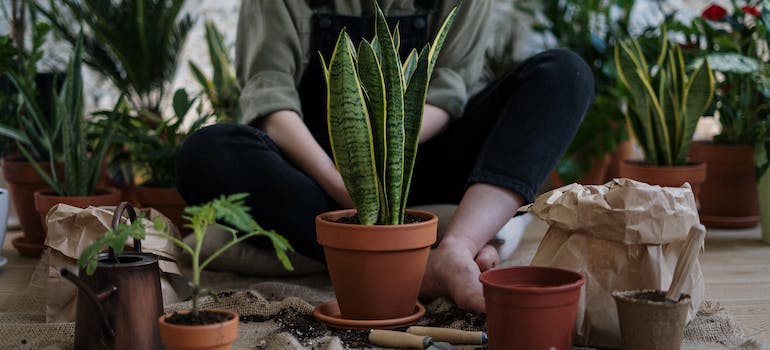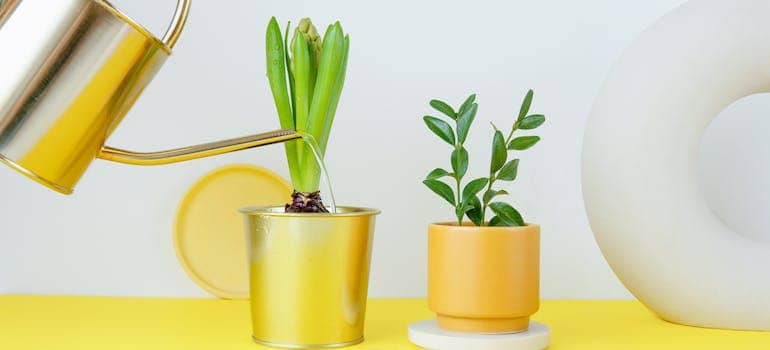Moving homes can often be a stressful experience, not just for us, but for our leafy companions as well. Plants, with their delicate nature, are particularly susceptible to the stress of relocation. They thrive in stable environments, and abrupt changes can lead to a host of issues, from drooping leaves to stunted growth. Overcoming this challenge requires a careful approach. Although the easiest way is to hire the professionals, such as moving and storage Northern Virginia has to offer, there’s a lot you can do to ensure you move your plants safely. As is the case with many other tasks, with the right preparation and attention, you can ensure the success of this activity and minimize the overall stress it comes with.
1. Understanding your plants’ needs
Before embarking on the moving journey, you must understand the specific needs of your plants. Each species has unique requirements for light, water, and temperature. These can be significantly impacted by the stress of moving. Familiarize yourself with these needs to ensure you can provide the right care before, during, and after the move.
- Research the light requirements for each plant species and plan accordingly.
- Understand water needs. Some plants may require more or less water before moving.
- Know the temperature and humidity preferences for each plant.
- Identify any special care needs, such as support for tall stems.
- Consider the growth phase of the plant – flowering, fruiting, or dormant periods require different care.
- Be aware of the plant’s susceptibility to stress and how best to mitigate it.

2. Pre-move preparation
To move your plants safely, you have to prepare them properly. Start by pruning dead or excess foliage, which can reduce the risk of damage and make the plants easier to transport. It’s also a good time to inspect for pests or diseases and treat them accordingly to prevent spreading during the move. Gradually acclimate your plants to less frequent watering a few weeks before the moving day. This can reduce the risk of waterlogging and stress. This preparation phase is very important for minimizing shock and maintaining the health of your plants, ensuring they’re in the best possible condition to withstand the moving process.
3. Choose the right containers
There are many different containers, and you should try to select the most suitable ones for your plants, particularly when considering the delivery service Northern Virginia can provide. The right container ensures that your plants are secure and can endure the transition smoothly.
Opting for durable containers
Durability is a feature to look for when choosing containers. Plastic pots are preferable over ceramic or clay ones, as they’re less likely to break and are lighter for transport. This will minimize the risk of damage during handling and transit.
Container size and plant health
The size of the container should correspond to the size of the plant. Ensure there is enough room for the roots to breathe but not so much space that the plant shifts within the pot. This balance is important for maintaining the plant’s health.

4. Apply proper packing techniques to move your plants safely
Packing your plants correctly increases their safety, especially when you are moving over long distances. Proper packing reduces the stress on plants and helps them withstand the journey to their new location.
Choose suitable packing materials
Selecting the right packing materials when transporting your plants makes a lot of difference. Use sturdy boxes that can accommodate the plant’s height and provide enough space for the leaves. Additionally, cushioning materials like bubble wrap or packing peanuts can be used to secure the pot and prevent movement. For delicate or large plants, custom crates can be a wise investment.
Packing plants for long journeys
Long-distance moves can take a toll on our green, potted friends. It’s a good idea to wrap the pots in plastic to retain soil moisture, and loosely cover the foliage with breathable material to protect against damage. Moreover, if you’re working with long distance moving companies Northern VA is served by, communicate your plants’ needs to ensure they receive the right care and attention during the move.
5. Transportation considerations
When the day of your move arrives, transporting your plants safely becomes the primary concern. The way you move them will determine whether they arrive at their destination in good health.
Select the right vehicle
The choice of vehicle depends on the nature of the move. For shorter moves within Fairfax County, for example, a standard car might suffice. However, for longer distances or larger collections, a spacious van or a truck from professional Fairfax County movers ensures that your plants have enough room and air circulation. Make sure the vehicle is climate-controlled to protect the plants from extreme temperatures.
Secure plants during transit
Once inside the vehicle, it is necessary to secure your plants so they don’t fall. Use seat belts or plant-specific supports to prevent them from tipping over. If using professional movers, ensure they understand the importance of careful handling. Keep the plants upright and stable, and if possible, avoid stacking anything on top of them. This care during transportation will help your plants arrive in their best condition.
6. Post-move plant care
After the move, it’s important to give your plants the attention they need to adjust to their new environment. This period is critical as plants can experience shock from the change in surroundings and care routines.
- Gradually introduce plants to their new location, starting with a few hours of exposure each day.
- Monitor for signs of stress like leaf drop, wilting, or color changes.
- Resume regular watering schedules, adjusting as needed for the new environment.
- Check for damage and trim any broken or dead foliage to promote new growth.
- Give plants time to adapt before applying fertilizers or other chemicals.
- Be patient and provide consistent care; it can take time for plants to fully recover.

The last leaf – final thoughts on plant moving
It is clear that to move your plants safely, your approach needs to be very delicate. However, it is undoubtedly a task that can be accomplished with great success. With just a bit of extra effort and attentiveness to the specific needs of your plants, you can ensure they not only survive the move but continue to flourish in their new environment. In essence, the key lies in careful planning, appropriate packing, and patient acclimation. These guidelines can help you provide your plants with the gentle care they need during the transition, turning the challenge of moving them into a rewarding experience that reaffirms your connection with your beloved green companions.


